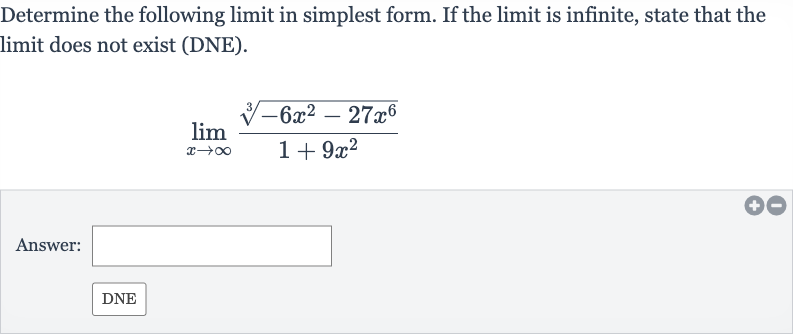Full solution
Q. Determine the following limit in simplest form. If the limit is infinite, state that the limit does not exist (DNE).Answer:
- Identify highest power: We are given the limit to evaluate: First, we need to identify the highest power of in the numerator and the denominator to simplify the expression.
- Factor out and : The highest power of in the numerator inside the cube root is , and in the denominator, it is . To simplify, we will factor out from the cube root in the numerator and from the denominator.
- Rewrite the limit: Factoring out from the cube root in the numerator gives us:And factoring out from the denominator gives us:
- Simplify cube root: Now we rewrite the limit as:
- Cancel out terms: We can simplify the cube root of as because . The limit now becomes:
- Simplify expression: We can cancel out the terms in the numerator and the denominator:
- Simplify cube root: As approaches infinity, the term approaches . So we can simplify the expression inside the cube root to just :
- Final simplification: The cube root of is , and is . So the limit simplifies to:
- Evaluate the limit: Since is a constant, the limit as approaches infinity is simply:
More problems from Power rule
QuestionGet tutor help
QuestionGet tutor help
QuestionGet tutor help
QuestionGet tutor help
QuestionGet tutor help

